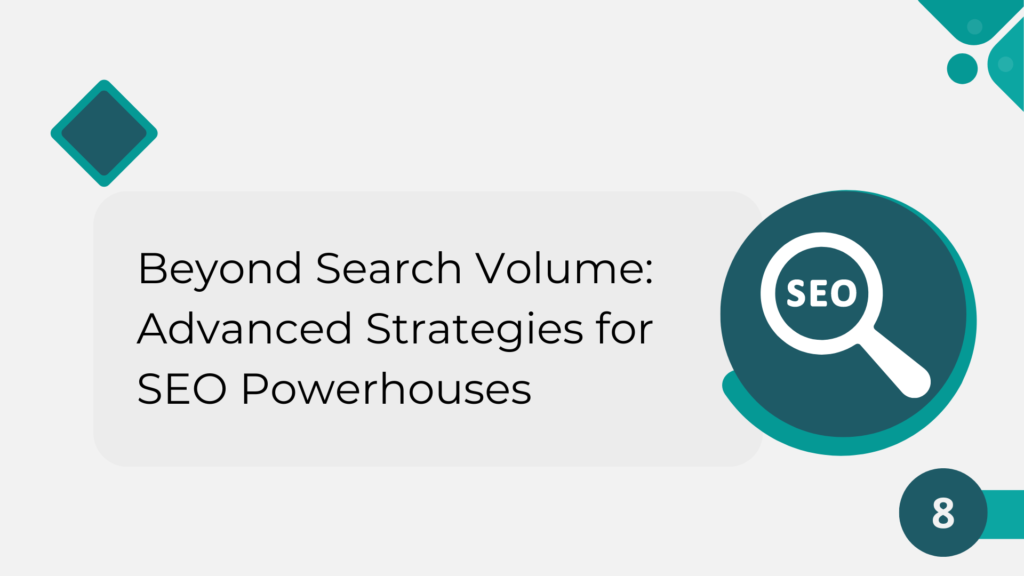Dominate Search Engines: The Ultimate Guide to Keyword Research for SEO
Dominate Search Engines: The Ultimate Guide to Keyword Research for SEO” is your essential resource for mastering keyword strategies, analyzing competition, and driving organic traffic. Perfect for all skill levels, this guide helps you achieve top search engine rankings.
1. Unlock Organic Traffic with Powerful Keyword Research.

Why Keyword Research is the Secret Weapon of SEO Masters
Imagine a magical key that unlocks a flood of website visitors. That’s the power of keyword research for SEO. By understanding what people search for, you create content that answers their questions and lands your website at the top of search results. This secret weapon attracts targeted traffic, boosts your online presence, and fuels your content strategy – all for free!
How to Skyrocket Website Visitors with Targeted Keywords
Struggling to get eyeballs on your website? Look no further than targeted keywords! These are the magic search terms people use to find what they need online. By incorporating them strategically, you can transform your website into a visitor magnet.
Here’s the recipe for website traffic success with targeted keywords:
- Unearth the Keywords Your Audience Craves: Research relevant keywords with high search volume, but don’t forget the competition! Tools like Google Keyword Planner can help you find the sweet spot.
- Craft Content Like a Targeting Pro: Weave your target keywords naturally into your website content, from titles and headings to blog posts and product descriptions.
- Think Beyond the Obvious: Explore long-tail keywords – more specific search phrases – to attract highly interested visitors.
- Become a User Intent Mastermind: Understand what people are really looking for when they use certain keywords. Are they seeking information, ready to buy, or just browsing? Tailor your content accordingly.
By following these steps and wielding the power of targeted keywords, you’ll be well on your way to skyrocketing your website traffic and achieving SEO dominance.
2. Brainstorming High-Impact Seed Keywords

Identify Your Niche & Audience: The Foundation of Keyword Success
Imagine building a house without a foundation – it wouldn’t last long! The same goes for keyword research. Before diving in, you need a solid foundation: your niche and target audience.
Why it Matters:
- Targeted Traffic: Knowing your niche helps you find keywords relevant to your audience, attracting the right visitors, not just anyone.
- Content Powerhouse: Understanding your audience’s needs and interests allows you to create content that resonates with them, boosting engagement.
- Laser Focus: By focusing on a specific niche, you can uncover hidden keyword gems with less competition, giving you an edge.
Finding Your Niche & Audience:
- Who are you passionate about helping?
- What specific problem do you solve?
- Who are your ideal customers (age, interests, etc.)?
By answering these questions, you’ll lay the groundwork for powerful keyword research, setting yourself up for SEO success.
Unearth Profitable Seed Keywords: Techniques for Goldmine Discovery
Finding the right keywords is like striking gold for your website. But where do you start digging? Here’s how to unearth those profitable seed keywords:
- Think Like Your Audience: Brainstorm terms they’d use to find your products or services.
- Competitor Spy Games: Analyze your competitor’s websites and content to see what keywords they’re targeting.
- Keyword Magic Tools: Leverage free tools like Google Trends and Answer the Public to discover trending topics and user questions related to your niche.
- Think Beyond the Obvious: Explore long-tail keywords – specific phrases with lower competition but high buying intent.
By using these techniques, you’ll transform from a keyword rookie to a gold-mining pro, ready to fuel your SEO strategy with profitable seed keywords.
3. Understanding User Intent: What Searchers Really Want

Informational vs. Transactional vs. Navigational Keywords: Decoding User Behavior
Keywords are like treasure map clues, but some clues lead to buried knowledge (informational), some to a hidden store (transactional), and some straight to the destination (navigational). Here’s how to decipher them:
- Informational Keywords: These are questions users ask to learn something. Think “how-to” guides, product comparisons, and reviews (e.g., “best laptops for students”).
- Transactional Keywords: These signal buying intent. Watch out for words like “buy,” “discount,” or specific product names (e.g., “buy a laptop online”).
- Navigational Keywords: These are like website addresses users type directly (e.g., “facebook.com”). They know exactly where they want to go.
Mastering these types unlocks powerful SEO. Use the right keywords to attract users at the right stage, leading them from curious explorers to loyal customers
Craft Content that Converts: Aligning Your Strategy with Search Intent
Imagine a customer walks into your store looking for a laptop, but you show them a brochure on refrigerators. Not a great sales strategy, right? The same applies to SEO.
Decoding User Intent = Content Magic
Understanding what users really want behind their searches (informational, transactional, etc.) is crucial. Here’s how to align your content strategy with user intent and watch conversions soar:
- Informational: Craft informative blog posts, articles, and guides that answer user questions and establish you as an expert (e.g., “A Guide to Choosing the Best Laptop for Students”).
- Transactional: Focus on product descriptions, buying guides, and clear calls to action for users ready to purchase (e.g., “Buy Now and Get Free Shipping on Laptops”).
- Navigational: Optimize your website structure and internal linking to make it easy for users to find what they’re looking for (e.g., clear navigation menus and product categories).
By aligning your content with user intent, you’ll attract the right visitors, provide them with the information they crave, and ultimately convert them into loyal customers. It’s a win-win for everyone!
4. Master Keyword Research Tools & Techniques

Free vs. Paid Keyword Research Tools: Choosing the Right Weapon
Keyword research is like a treasure hunt, and the right tools can make all the difference. But do you need a fancy metal detector or can a good old map do the trick? Let’s explore the battle between free and paid keyword research tools:
Free Keyword Research Tools:
- Pros: Easy to use, budget-friendly, good for initial research.
- Cons: Limited data (search volume, competition), basic features.
Examples:
- Google Keyword Planner: Great for basic keyword ideas and search volume estimates.
- Answer the Public: Generates creative long-tail keyword variations.
- Soovle: Shows search suggestions from multiple platforms (Google, YouTube, etc.).
Paid Keyword Research Tools:
- Pros: In-depth data analysis (competition, search trends, cost-per-click), advanced filtering options, competitor keyword research.
- Cons: Cost involved, can have a learning curve.
Examples:
- SEMrush: Offers comprehensive keyword research suite with competitor analysis.
- Ahrefs: Powerful tool for competitor research, uncovering hidden keyword opportunities.
- Moz Keyword Explorer: Provides good keyword suggestions and difficulty score estimates.
Choosing Your Weapon:
For beginners, free tools are a great starting point. They can help you identify relevant keywords and understand basic search volume. As your SEO journey progresses, paid tools become valuable weapons, offering deeper insights and advanced features to refine your strategy.
The best approach? Start with the free options and graduate to paid tools as your needs evolve. Remember, the most powerful weapon is the one you wield effectively!
Analyze Search Volume, Competition, & Related Searches Like a Pro
Finding the perfect keywords is like searching for the holy grail of SEO. But it’s not just about the keyword itself – it’s about the bigger picture. Here’s how to analyze search volume, competition, and related searches like a pro:
Search Volume: The Traffic Treasure Map
- Imagine a treasure chest overflowing with website visitors – that’s search volume. Higher volume means more potential traffic, but it’s not the only factor.
Competition: The SEO Battleground
- Think of competition as the number of other websites vying for the same keyword. Super high competition can make it tough for your content to rank high.
Related Searches: Uncovering Hidden Gems
- These are the bonus keywords users also search for, offering valuable insights into user intent and potential long-tail keyword opportunities.
Mastering the Trifecta:
- Strike a Balance: Look for keywords with decent search volume, manageable competition, and relevant related searches.
- Search Volume Tools: Use tools like Google Keyword Planner or SEMrush to estimate search volume.
- Competition Analysis: Spy on your competitors! See what keywords they rank for and assess their difficulty. Tools like Ahrefs or Moz can help.
- Related Search Magic: Utilize tools like Answer the Public or Google’s “Searches related to…” feature to uncover hidden keyword gems.
Becoming a Keyword Analysis Pro:
By analyzing these three elements, you’ll unlock a treasure trove of keyword opportunities. You’ll attract the right traffic, avoid fierce competition, and discover long-tail keywords that can propel your SEO strategy forward. Remember, it’s not just about finding keywords, it’s about finding the perfect keywords for your specific goals!
Leverage Google Keyword Planner & Other Powerful Resources
Conquering the SEO battlefield requires the right weapons. While there’s a vast arsenal of keyword research tools, some stand out as valuable allies. Here’s how to leverage Google Keyword Planner and other powerful resources to dominate your keyword research:
Google Keyword Planner: The Free Powerhouse
Think of Google Keyword Planner as your basic training ground. It’s a free tool by Google that offers:
- Keyword Ideas: Brainstorm new keywords based on seed keywords or your website content.
- Search Volume Estimates: Get a sense of how many people search for a particular keyword each month.
- Competition Level: Gauge the difficulty of ranking for a keyword (high, medium, low).
While powerful for beginners, Google Keyword Planner has limitations:
- Limited Data: Search volume estimates can be broad, and competition levels are just a basic indicator.
- No Long-Tail Magic: It doesn’t excel at uncovering hidden long-tail keyword opportunities.
Beyond Google Keyword Planner: Expanding Your SEO Arsenal
For advanced keyword research, consider these potent resources:
- SEMrush: A comprehensive suite offering in-depth keyword research, competitor analysis, and advanced backlink tracking.
- Ahrefs: Renowned for its powerful competitor research capabilities, uncovering hidden keywords your competitors rank for.
- Moz Keyword Explorer: Provides valuable keyword suggestions with difficulty score estimates and SERP analysis features.
Utilizing These Resources Like a Pro:
- Start with Google Keyword Planner: It’s a free and easy way to get initial keyword ideas and search volume estimates.
- Graduate to Paid Tools: As your SEO needs evolve, consider paid tools for deeper insights, advanced filtering, and competitor research.
- Combine Tools for Best Results: Don’t rely on a single source. Use a combination of Google Keyword Planner and paid tools for a well-rounded strategy.
- Explore Free Alternatives: Many free tools offer valuable features, like Answer the Public for creative long-tail keywords or Soovle for multi-platform search suggestions.
By leveraging Google Keyword Planner and other powerful resources, you’ll arm yourself with the knowledge to conduct thorough keyword research, identify high-potential keywords, and ultimately outrank your competition in the SEO arena. Remember, knowledge is power, and in the world of SEO, keyword research is your key to unlocking success!
5. Conquer Keyword Difficulty: Ranking Strategies for Growth

Demystifying Keyword Difficulty: Factors Affecting Rankings
Ever wondered why some keywords seem impossible to crack, while others appear easily conquerable in the SEO world? The answer lies in keyword difficulty. It’s not a magical spell, but a combination of factors that determine how challenging it will be to rank your website for a specific keyword. Here’s the decoder ring to crack the code:
The Major Players in Keyword Difficulty:
- Domain Authority (DA): Imagine websites as fortresses. High DA websites are like ancient castles, well-established and difficult to dethrone from search rankings. Tools like Moz [invalid URL removed] or Ahrefs can estimate DA.
- Page Authority (PA): Think of individual pages on a website as knights guarding the castle. High PA pages are strong contenders, well-optimized for specific keywords. Keyword research tools often estimate PA alongside DA.
- Backlinks: Backlinks are like votes of confidence from other websites, pointing to yours. The more high-quality backlinks a page has, the stronger its position in search results.
- Content Quality: Content is king! High-quality, informative, and engaging content that surpasses competitors’ offerings increases your chances of ranking well.
- Search Intent: Understanding user intent (informational, transactional, etc.) allows you to tailor your content for the specific search goal, boosting its relevance and ranking potential.
The Takeaway:
Keyword difficulty isn’t a single number, but a complex interplay of these factors. By analyzing them, you can estimate the effort required to rank for a particular keyword.
Pro Tip: Don’t shy away from some competition! Look for keywords with a good balance of search volume and achievable difficulty. Long-tail keywords, for example, often have lower competition and can be a great way to gain traction.
Remember: Keyword research is an ongoing process. As your website grows in authority and your content quality improves, you can gradually target more competitive keywords and climb the SEO ladder. Demystify keyword difficulty, choose your battles wisely, and watch your website rise through the SERPs!
Find the Sweet Spot: Balancing Search Volume & Competition
Imagine a delicious SEO candy – high search volume on one side and manageable competition on the other. That’s the sweet spot you’re aiming for in keyword research! While both factors are crucial, striking the right balance is key to attracting website visitors and conquering the search rankings.
The Search Volume Symphony:
- High Search Volume: Picture a concert hall overflowing with potential visitors – that’s high search volume. It translates to more people searching for a specific keyword, meaning more potential website traffic. Tools like Google Keyword Planner offer search volume estimates.
The Competition Conundrum:
- Low Competition: Think of low competition as an empty stage – easy to grab the spotlight! However, keywords with very low competition might also have low search volume, translating to fewer potential visitors.
Finding the Perfect Harmony:
The ideal keyword is like a catchy pop song – high search volume to attract a large audience, but not so overplayed (high competition) that it’s impossible to stand out. Here’s how to find that sweet spot:
- Analyze Search Volume and Competition Together: Don’t get hung up on just one factor. Look for keywords with decent search volume (enough potential visitors) and manageable competition (a stage with some space, but not overcrowded).
- Consider Long-Tail Keywords: These are more specific keyword phrases with lower competition but can still attract highly targeted visitors. Think of them as niche concerts attracting a dedicated audience.
- Target Keywords with Rising Search Volume: Look for keywords with increasing search trends – they might be the next big thing in your industry! Imagine a band on the rise, attracting a growing fanbase.
Pro Tip: Use tools like SEMrush or Ahrefs to analyze both search volume and competition for a comprehensive picture.
Remember: Keyword research is an ongoing process. As your website grows in authority and your content quality improves, you can gradually target more competitive keywords while still maintaining a healthy balance with search volume. So, put on your detective hat, analyze those keywords, and find the sweet spot that will make your website the star of the SEO show!
6. Build an Unbeatable Keyword Strategy for SEO Domination

Organize Your Keywords: Buckets, Clusters, & Content Mapping
Imagine a treasure chest overflowing with keywords, but it’s a jumbled mess! Finding what you need is impossible. Keyword organization is crucial for creating a winning SEO strategy. Here’s how to use buckets, clusters, and content mapping to bring order to the chaos:
1. Bucketing Your Keywords: The Big Picture
- Think of buckets as large categories that group similar keywords together. This initial sorting helps you see the broad themes within your target audience’s search queries.
For example:
- E-commerce store selling sports equipment: Buckets could be “Running Gear,” “Team Sports Equipment,” or “Fitness Apparel.”
2. Keyword Clustering: Diving Deeper
- Now, zoom in on each bucket and create clusters. These are smaller groups of closely related keywords that fall under a specific theme within your bucket.
For example:
- Bucket: “Running Gear”
- Cluster 1: “Running shoes for men” (keywords: best running shoes for men, comfortable running shoes)
- Cluster 2: “Women’s running clothes” (keywords: breathable running shirts, lightweight running jackets)
3. Content Mapping: Building Your SEO Empire
- This is where the magic happens! Map out specific content pieces that target each keyword cluster. This ensures your website comprehensively covers relevant topics and user needs.
For example:
- Cluster 1: “Running shoes for men”
- Content: Blog post titled “Top 10 Running Shoes for Men in 2024”
Benefits of Organization:
- Improved Targeting: Organized keywords help you create targeted content that resonates with specific user searches.
- Content Planning Powerhouse: Keyword buckets and clusters act as a roadmap for your content strategy, ensuring you cover all relevant topics.
- Effortless SEO: Organized keywords make it easier to optimize your website for relevant searches, boosting your SEO ranking potential.
Remember: Keyword organization is an ongoing process. As you conduct further research and your website grows, you can refine your buckets, clusters, and content map to stay ahead of the curve. With a well-organized keyword strategy, your website will be a beacon of clarity in the ever-changing SEO landscape!
Prioritize Keywords for Maximum Impact: Goals & Resources
Conquering the SEO battlefield requires a strategic plan, and keyword prioritization is your secret weapon. Just like an army wouldn’t send all its troops into a single battle, you wouldn’t target every keyword you find. Here’s how to prioritize keywords for maximum impact, aligned with your specific goals and resources:
1. Define Your SEO Goals:
Before diving into keyword research, take a step back and ask yourself: “What do I want to achieve with SEO?” Common goals include:
- Increased Website Traffic: Attract more visitors to your website.
- Improved Brand Awareness: Get your brand name out there.
- Lead Generation: Convert visitors into potential customers.
- Higher Sales & Conversions: Drive online sales or product signups.
Knowing your goals helps you choose keywords that directly contribute to your success.
2. Analyze Search Volume & Competition:
Use keyword research tools like Google Keyword Planner or SEMrush to understand:
- Search Volume: How many people search for a specific keyword each month. Higher volume often translates to more potential traffic, but it’s not the only factor.
- Competition: How difficult it will be to rank for a keyword. Super high competition can make it tough for your content to stand out.
3. Strike the Perfect Balance:
Ideally, you want a mix of keywords with:
- Decent Search Volume: Enough potential visitors to make targeting them worthwhile.
- Manageable Competition: Not so competitive that ranking seems impossible.
4. Prioritize Based on User Intent:
Keywords aren’t just words; they represent user intent (what the searcher is looking for). Here’s how to prioritize based on intent:
- Informational: Users are looking to learn something (e.g., “best laptops for students”). Prioritize these keywords if you want to establish yourself as an expert and attract potential customers early in their buying journey.
- Transactional: Users are ready to buy (e.g., “buy a laptop online”). These are goldmines for e-commerce businesses.
- Navigational: Users know exactly where they want to go (e.g., “facebook.com”). Optimize your website structure and internal linking for these.
5. Consider Long-Tail Keywords:
Long-tail keywords are more specific keyword phrases with lower competition but can still attract highly targeted visitors. Think of them as niche markets with dedicated audiences. For example, “best lightweight laptops for students on a budget” is a long-tail keyword.
6. Utilize Free & Paid Resources:
There are a variety of resources to help you with keyword research and prioritization:
- Free Resources: Google Keyword Planner, Answer the Public ([answerthepublic.com]), Soovle ([soovle.com])
- Paid Resources: SEMrush, Ahrefs ([ahrefs.com]), Moz Keyword Explorer ([[invalid URL removed]])
Start with free tools for initial research, and consider paid options as your SEO needs evolve.
7. Continuously Monitor & Refine:
The SEO landscape is constantly changing. Monitor your keyword performance over time and adjust your prioritization strategy as needed.
By following these steps and prioritizing your keywords based on goals, resources, and user intent, you’ll be well on your way to unlocking the true potential of your SEO strategy and attracting the right visitors to your website.
Integrate Keywords Seamlessly into Your Content Strategy
Keywords are the building blocks of SEO success, but simply stuffing them into your content won’t win the race. It’s about weaving them in organically, creating content that’s informative, engaging, and optimized for search. Here’s how to integrate keywords seamlessly into your content strategy:
1. Focus on User Intent, Not Just Keywords:
Think of keywords as clues to user needs. What are they searching for? Are they looking to learn (“how to fix a leaky faucet”) or buy something (“best kitchen faucets”)? Craft content that addresses their intent, using relevant keywords naturally.
2. Target Primary & Secondary Keywords:
- Primary Keywords: These are the main themes of your content. Use them strategically in your title tags, headings, and throughout the body (but not excessively).
- Secondary Keywords: These are related keywords that enrich your content and target user intent variations. Sprinkle them throughout your writing to provide a broader context.
For example:
- Primary Keyword: “Best laptops for students”
- Secondary Keywords: “student laptops,” “affordable laptops,” “laptops for college”
3. Write Compelling Headlines & Meta Descriptions:
Headlines are like billboards for your content. Use your primary keyword and craft clear, concise titles that grab attention and accurately reflect the content. Meta descriptions are short summaries that appear in search results. Include your primary keyword and a compelling description to entice users to click.
4. Don’t Forget On-Page Optimization:
Strategic keyword placement throughout your content improves searchability. Include your primary keyword in the title tag, headings (H1, H2, etc.), URL (if relevant), and naturally within the body text. But remember, keyword density is not the only factor.
5. Prioritize Readability:
Your content should be written for humans, not search engines. Keyword stuffing creates clunky, unnatural sentences. Focus on clarity, flow, and providing value to your readers.
6. Leverage Internal Linking:
Link to relevant pages on your website that expand on specific topics. This helps distribute SEO power within your site and keeps users engaged, exploring your content further.
7. Embrace Content Variety:
Don’t limit yourself to just blog posts. Explore infographics, videos, and other engaging formats that incorporate keywords naturally and cater to different learning styles. Here are some resources to get you started creating infographics:
8. Make Use of Content Clusters:
Group related content pieces around a central theme, using a primary keyword for the main content and secondary keywords for supporting pieces. This creates a comprehensive information hub on a specific topic, boosting your website’s authority and user engagement.
Remember: Keyword integration is an art, not a science. By prioritizing user intent, strategic placement, and readability, you’ll create content that attracts visitors, ranks well in search results, and ultimately helps you achieve your SEO goals. Write content infused with valuable information, not just keywords, and watch your website climb the SEO ladder!
7. Beyond Search Volume: Advanced Strategies for SEO Powerhouses

Long-Tail Keywords: The Untapped Traffic Goldmine
In the vast landscape of SEO, short-head keywords (think “running shoes”) are like glittering mountain peaks, tempting with their high search volume. But reaching them can be a treacherous climb, fraught with fierce competition.
Enter long-tail keywords: These are more specific keyword phrases, acting as hidden pathways to SEO success. Imagine them as winding trails leading to secluded valleys teeming with targeted traffic. Here’s why long-tail keywords are a goldmine waiting to be tapped:
1. Lower Competition: Unlike Everest-like short-head keywords, long-tail keywords have fewer competitors vying for ranking. This makes them easier to rank for, even with a relatively new website.
2. Higher Conversion Rates: Because long-tail keywords are more specific, they attract users with a clearer purchase intent. Someone searching for “waterproof running shoes for women” is likely closer to buying than someone searching for just “running shoes.”
3. Uncover Hidden Gems: Long-tail keywords help you discover niche markets and user needs you might not have considered before. They act like a compass, guiding you towards highly relevant, yet less competitive, search queries.
4. Build Topic Authority: By targeting a variety of long-tail keywords related to a broader topic, you establish your website as a comprehensive information hub. This enhances your website’s authority and credibility in the eyes of search engines.
5. Enhance User Experience: Content optimized for long-tail keywords caters to specific user needs, providing a more relevant and satisfying search experience. This can lead to increased user engagement and loyalty.
How to Find Long-Tail Keyword Riches:
- Utilize Keyword Research Tools: Free tools like Google Keyword Planner or Answer the Public can help you generate long-tail keyword ideas. Consider paid options like SEMrush or Ahrefs for more advanced features.
- Analyze User Search Queries: Look at your website’s analytics to see what search terms users are already employing to find your site. This can provide valuable insights into potential long-tail keywords.
- Think Like Your Audience: Consider the specific questions and challenges your target audience might have. What would they type into a search engine to find a solution?
Remember: Long-tail keywords are a powerful SEO strategy, but don’t neglect short-head keywords entirely. Utilize a mix of both to capture high-volume traffic and attract highly targeted visitors. By incorporating long-tail keywords into your content strategy, you’ll unlock a treasure trove of targeted traffic, improve conversions, and establish your website as a valuable resource in your niche. So, grab your explorer’s hat and embark on the exciting journey of long-tail keyword research!
Local SEO Mastery: Target Geographic Keywords for Local Domination
In the ever-evolving landscape of SEO, local businesses have a unique battleground. Here’s where local SEO comes in, your trusty weapon for attracting customers within your geographic area. Mastering geographic keywords is the key to dominating your local market and attracting those searching for businesses like yours nearby.
Think of geographic keywords like a neon sign, attracting customers in your vicinity. Instead of targeting broad terms like “pizza,” you’d use “best pizza near me” or “New York style pizza in [your city].” Here’s how to leverage geographic keywords for local SEO mastery:
1. Identify Your Service Area:
- Define Your Territory: Are you a neighborhood bakery or a city-wide plumber? Knowing your target area helps you determine the most relevant geographic keywords.
2. Craft Compelling Keyword Phrases:
- Location, Location, Location: Integrate city, town, or zip code variations into your keywords. Examples: “plumber in [your city],” “[your city] dentist open evenings.”
- Get Specific with Neighborhoods: Target well-known neighborhoods to reach a more focused audience. Example: “Italian restaurant in [trendy neighborhood].”
3. Go Beyond Just City Names:
- Think Like Your Customers: What specific terms might they use to find your business? Example: “late-night coffee shop downtown.”
4. Utilize Local Search Tools:
- Free Options: Google Keyword Planner offers location-based search volume estimates.
- Paid Options: Tools like SEMrush or Ahrefs provide advanced local SEO features and competitor analysis.
5. Optimize Your Website and Online Presence:
- Localize Your Content: Infuse your website content with city-specific details, events, or landmarks.
- Claim and Optimize Your Google My Business Listing: This is crucial for local search dominance! Provide accurate business information, manage reviews, and leverage features like Google Posts.
6. Embrace Online Reviews:
- Positive Reviews are Gold: Encourage satisfied customers to leave glowing reviews on Google My Business and other platforms. Respond to both positive and negative reviews professionally.
7. Build Local Citations:
- Citations are Backlinks for Local SEO: Ensure your business information (name, address, phone number) is consistent across local directories, websites, and apps.
By mastering geographic keywords and implementing these local SEO strategies, you’ll transform your website into a beacon for local customers. Remember, local SEO is an ongoing process. Stay updated on the latest trends, refine your approach, and watch your local business thrive in the digital landscape!
Stay Ahead of the Curve: Keeping Your Keyword Research Fresh
The SEO world is a marathon, but the importance of keyword research is a sprint within it. Just like a runner needs to stay hydrated and adjust their pace, your keyword strategy requires constant refreshing to stay ahead of the curve. Here’s how to ensure your keyword research stays fresh and fuels your SEO success:
1. Monitor Search Trends:
- Embrace Change: Search trends are like the weather – constantly evolving. Use Google Trends to see how search volume and user interest fluctuate for your target keywords.
2. Stay Alert for New Search Terminology:
- Fresh Eyes, Fresh Keywords: New words and phrases emerge all the time. Utilize tools like Answer the Public ([answerthepublic.com]) or browse online forums to discover new search terminology relevant to your niche.
3. Analyze User Search Queries:
- Dive Deeper into Analytics: Your website’s analytics goldmine holds valuable insights. Look at what search terms users are already employing to find your site. This can reveal unexpected high-performing long-tail keywords you weren’t targeting before.
4. Leverage Competitor Analysis Tools:
- Spy on the Competition (Ethically): Tools like SEMrush or Ahrefs can help you discover keywords your competitors are ranking for. Analyze their strategies and identify potential gaps you can exploit.
5. Content Clusters and Topic Authority:
- Revisit and Refresh: As your content grows and your website establishes authority, revisit your existing content clusters. You can identify opportunities to expand on existing topics with new, high-performing long-tail keywords.
6. Seasonal Shifts and Trending Topics:
- Seasonal Optimization: Certain keywords will naturally see increased search volume during specific times of year. For example, “holiday gift ideas” spikes around December. Adapt your content strategy to incorporate seasonal trends.
7. Embrace New Content Formats:
- Diversify Your Reach: New content formats like podcasts or videos can open doors to new keyword opportunities. Research keywords relevant to your chosen formats and optimize your content accordingly.
8. The Power of Social Listening:
- Listen Up! Social media platforms are a treasure trove of user queries and discussions. Actively listen to what your target audience is talking about and identify potential keyword opportunities.
Remember: Keyword research is an ongoing process. By incorporating these tactics into your SEO strategy, you’ll ensure your keyword research stays fresh, your content remains relevant, and your website continues to attract high-quality traffic that converts. So lace up your SEO running shoes, keep an eye on the trends, and sprint towards long-lasting SEO success!
8. Conclusion: The Ongoing Journey of Keyword Research Success

Recap: Mastering the Art of Keyword Research for SEO
Congratulations! You’ve unlocked the secrets of keyword research, a fundamental skill in the SEO arena. Remember, it’s not about wielding a magic spell, but strategically selecting the right keywords to attract website visitors and conquer search rankings. Here’s a recap of the key takeaways:
The Keyword Powerhouse:
- Understanding Keywords: Keywords are the foundation of SEO. They represent what users search for, and optimizing your content for relevant keywords increases your chances of ranking well.
- Demystifying Keyword Difficulty: It’s not just about search volume. Factors like domain and page authority, backlinks, and content quality all influence how challenging it will be to rank for a particular keyword.
Finding the Sweet Spot:
- Balancing Search Volume & Competition: High search volume is great, but if competition is fierce, it might be difficult to stand out. Look for keywords with a good balance – enough potential visitors and manageable competition.
- Long-Tail Treasures: Don’t underestimate long-tail keywords! These more specific phrases have lower competition and can attract highly targeted visitors, eager to find exactly what you offer.
Keyword Organization is Key:
- From Chaos to Clarity: Organize your keywords into buckets (broad categories), clusters (related subtopics), and a content map (specific content ideas). This structure ensures you cover relevant topics comprehensively.
Prioritizing for Maximum Impact:
- Align with Your Goals: Are you aiming for increased website traffic, brand awareness, or lead generation? Define your SEO goals to choose keywords that directly contribute to your success.
- User Intent Matters: Keywords are clues to user intent. Are they looking for information, ready to buy, or something else? Craft content that caters to their specific needs.
Content with Clout:
- Seamless Integration: Don’t stuff keywords – weave them organically into your content. Prioritize user experience and readability, providing valuable information that engages your audience.
- Strategic Placement: Use primary keywords in titles, headings, and naturally throughout the content. Sprinkle in secondary keywords for a broader context.
Staying Fresh in the SEO Race:
- Keyword Research is a Marathon: Search trends and user behavior are constantly evolving. Regularly refresh your keyword research using various tools and techniques to stay ahead of the curve.
By mastering the art of keyword research and implementing these strategies, you’ll unlock the true potential of your SEO efforts. Remember, it’s about quality content, strategic targeting, and continuous improvement. So, put your keyword research skills to the test, and watch your website climb the SEO ladder to success!
Why Continuous Keyword Research is Essential for Long-Term Growth
Imagine a car running on fumes – it might sputter along for a while, but it won’t win any races. The same goes for SEO without continuous keyword research. It might get you some initial results, but long-term growth requires a full tank of relevant keywords. Here’s why keyword research is an ongoing journey, not a one-time pitstop:
1. A Dynamic Landscape: The SEO landscape is constantly shifting. New trends emerge, search terms evolve, and user behavior changes. Regular keyword research ensures you stay on top of these changes and target the keywords that are currently driving traffic and conversions.
Think of it this way: If you only researched keywords a year ago, you might be missing out on entirely new search terms people are using to find businesses like yours.
2. Evolving User Intent: User intent, the reason behind a search query, can also change over time. Continuous research helps you understand how users are searching for your products or services and tailor your content accordingly. For example, “best laptops for students” might have different user intent today compared to five years ago.
3. The Never-Ending Rise of New Competitors: As your niche grows, so will your competition. Regular keyword research allows you to identify new competitors and the keywords they’re targeting. This empowers you to adjust your strategy and ensure you stay visible in search results.
4. Content Refresh and Expansion: Your website content is a living document. As you conduct new keyword research, you might discover opportunities to refresh existing content with high-performing keywords or create entirely new content pieces targeting these keywords. This keeps your content relevant and expands your reach.
5. Seasonal Shifts and Trending Topics: Certain keywords naturally experience seasonal fluctuations. For example, searches for “summer sandals” spike in the spring, while “snow boots” trend in the winter. Continuous research allows you to capitalize on these seasonal trends and optimize your content accordingly.
6. Measuring Success and Identifying Gaps: By tracking your keyword rankings and website traffic over time, you can identify keywords that are underperforming or haven’t been targeted yet. This allows you to refine your strategy and fill any keyword gaps that might be hindering your growth.
Continuous keyword research is like adding fuel to your SEO engine. It ensures you’re targeting the right keywords, attracting the most relevant traffic, and constantly optimizing your content for long-term success. Remember, SEO is a marathon, not a sprint. By making keyword research a regular part of your SEO strategy, you’ll ensure your website stays ahead of the curve and achieves sustainable growth over time.
9. Bonus: Actionable Tips for Effective Keyword Research

Practical Strategies to Implement Your Keyword Research & Reap the Rewards
Keyword research is like unearthing a treasure map – it reveals valuable insights, but you still need a plan to find the gold (website traffic and conversions) at the end of the rainbow. Here’s how to translate your keyword research into practical SEO strategies and reap the rewards:
1. Content is King (and Queen):
- Content Mapping Magic: Use your keyword clusters to create a content map. This blueprint outlines specific content pieces targeting each cluster and its related keywords.
- Content Variety is the Spice of Life: Don’t just stick to blog posts. Experiment with infographics, videos, ebooks, and other engaging formats that cater to different learning styles and incorporate relevant keywords naturally.
2. On-Page Optimization: A Foundation for Success
- Strategic Keyword Placement: Include your primary keyword in the title tag, headings (H1, H2, etc.), URL (if relevant) and naturally throughout the body text. But remember, keyword density is not the only factor; prioritize readability.
- Meta Description Magic: Craft compelling meta descriptions that include your primary keyword and entice users to click on your search result snippet.
3. Internal Linking: Building a Strong Website Structure
- Connect the Dots: Link relevant pages on your website that expand on specific topics within your keyword clusters. This helps distribute SEO power within your site and keeps users engaged, exploring your content further.
4. Technical SEO: The Unsung Hero
- Mobile-Friendliness is a Must: Ensure your website is mobile-friendly, as many users search and browse on their smartphones.
- Page Speed Optimization: A slow loading website can frustrate users and hurt your SEO ranking. Take steps to improve your website’s loading speed.
5. Content Promotion: Spreading the Word
- Social Media is Your Ally: Share your content on social media platforms to reach a wider audience and attract potential visitors.
- Guest Blogging Opportunities: Contribute guest posts to relevant websites in your niche. This can generate backlinks to your site, improve your domain authority, and expose you to a new audience.
6. Analytics: Tracking Your Progress
- Monitor Your Performance: Regularly track your website traffic, keyword rankings, and conversions using website analytics tools like Google Analytics.
- Refine Your Strategy: Analyze your data to identify what’s working and what’s not. Use these insights to refine your keyword targeting and content strategy for continuous improvement.
7. Stay Ahead of the Curve:
- The SEO Landscape is Dynamic: Keep up-to-date with the latest SEO trends and algorithm updates. This ensures your website remains optimized and continues to rank well in search results.
Remember: SEO is a marathon, not a sprint. By implementing these practical strategies and consistently monitoring your progress, you’ll transform your keyword research into a treasure trove of valuable website traffic and conversions. So, put on your SEO explorer hat, equip yourself with these tactics, and embark on your journey to conquer the search engine rankings!
10. Resources: Your Toolkit for Keyword Research Supremacy

A Curated List of Essential Keyword Research Tools & Resources
Keyword research is the foundation of any successful SEO strategy. But with a vast array of tools and resources available, navigating this landscape can be overwhelming. Here’s a curated list categorized by function to help you find the perfect options for your SEO needs:
Free Keyword Research Tools:
- Google Keyword Planner: A staple for any SEO toolkit. Explore search volume, competition level, and related keyword suggestions – all from the source (Google).
- Answer the Public: A creative brainstorming tool that generates long-tail keyword variations based on prepositions and questions. Spark new content ideas and uncover user intent behind search queries.
- Soovle: Discover search suggestions from various search engines like Google, YouTube, Bing, and Amazon. See how keywords trend across different platforms and identify potential opportunities.
Freemium Keyword Research Tools:
- Ubersuggest: Offers a free plan with limited searches but provides valuable insights like search volume, competition level, and related keyword suggestions. Great for initial research and competitor analysis.
- Keywordtool.io: Another freemium option that explores keyword suggestions across various platforms (Google, YouTube, Bing, etc.). The free plan offers a limited number of searches but can be a helpful starting point.
Paid Keyword Research Tools (For Advanced Users):
- SEMrush: A comprehensive SEO suite offering advanced keyword research features. Analyze competitor strategies, track keyword rankings, and conduct in-depth keyword research with detailed metrics.
- Ahrefs: Another powerful SEO toolkit with advanced keyword research capabilities. Explore keyword difficulty, search volume, click-through rates (CTR), and identify content gaps your competitors might have missed.
Bonus Resources:
- Google Trends: Track keyword popularity over time and see how user interest fluctuates. Identify seasonal trends and optimize your content accordingly.
- Moz Beginner’s Guide to Keyword Research: A comprehensive guide from a reputable SEO brand. Learn the fundamentals of keyword research, explore various tools, and discover best practices for effective implementation.
Remember: The best keyword research tool depends on your specific needs and budget. Start with free options to get your feet wet, and consider paid options as your SEO strategy evolves. By leveraging these tools and resources, you’ll be well-equipped to unearth a treasure trove of valuable keywords to propel your website to SEO success!
Know More
S.E.O. Interview Questions for freshers That Will Help You Get A Job
How to Get High Quality Backlinks
FAQ’s
What is keyword research and why is it important for SEO?
Keyword research is the process of discovering and analyzing terms people use to search for information online. It helps you understand what content your target audience is looking for and what keywords you should be targeting to improve your website’s ranking in search engine results pages (SERPs). By incorporating relevant keywords into your website’s content, you can increase your website’s visibility and attract more organic traffic.
How do I find the right keywords to target?
There are several ways to find relevant keywords for your SEO strategy. You can start by brainstorming broad topics related to your industry or niche. Then, use free and paid keyword research tools to discover long-tail keywords (more specific phrases) with good search volume and lower competition. Analyzing search trends through Google Trends can also be helpful to see what topics are gaining popularity.
Is it enough to just include keywords on my website?
While including relevant keywords throughout your website content is important, it’s not the only factor search engines consider for ranking. You should also focus on creating high-quality, informative content that addresses the search intent behind the keywords. This means providing valuable and engaging content that truly answers users’ questions and solves their problems.
